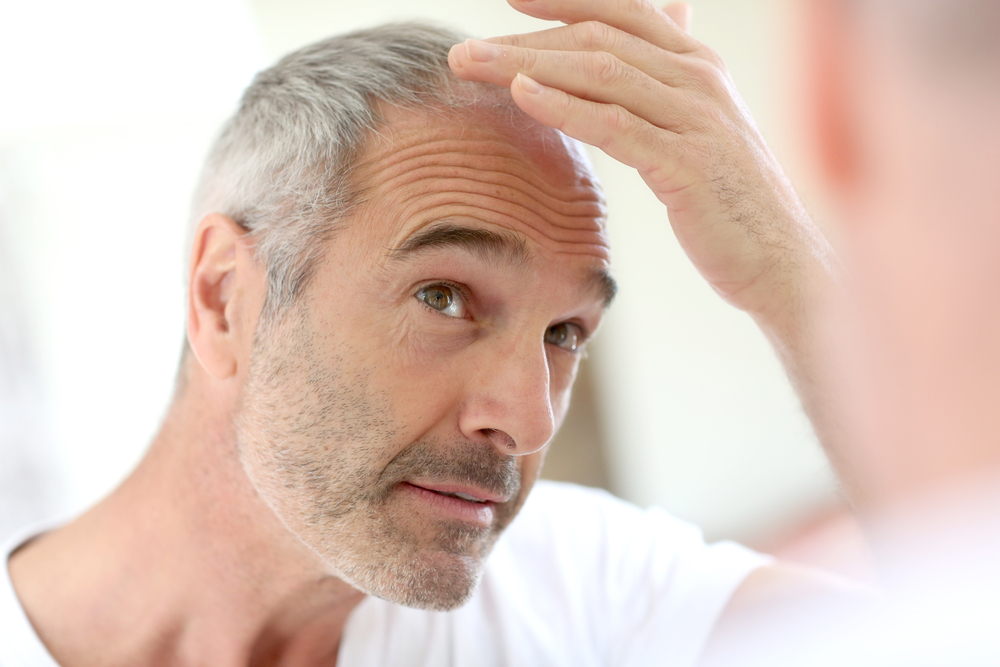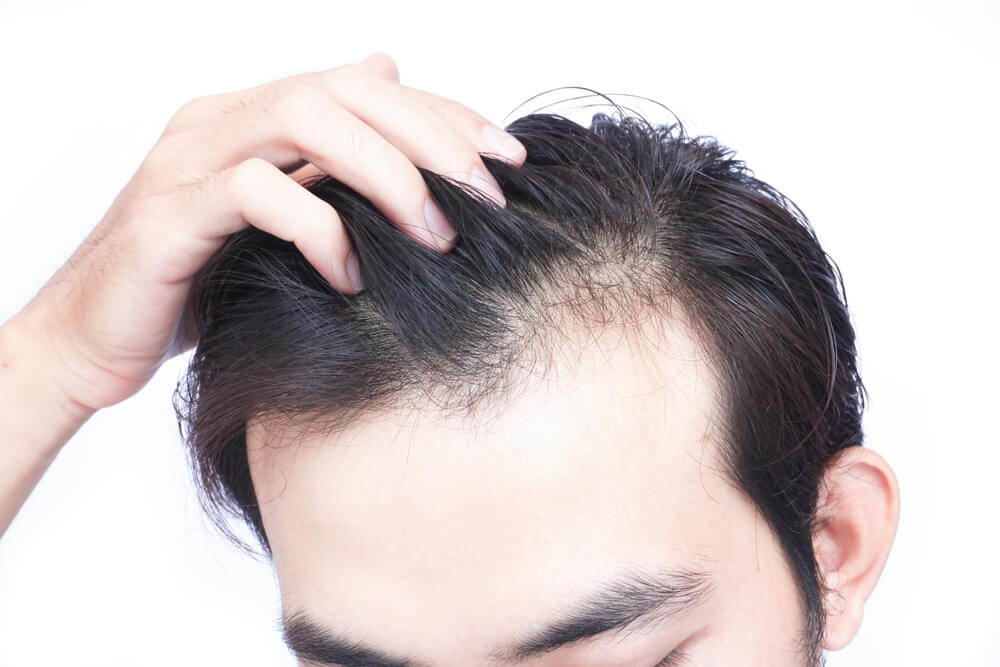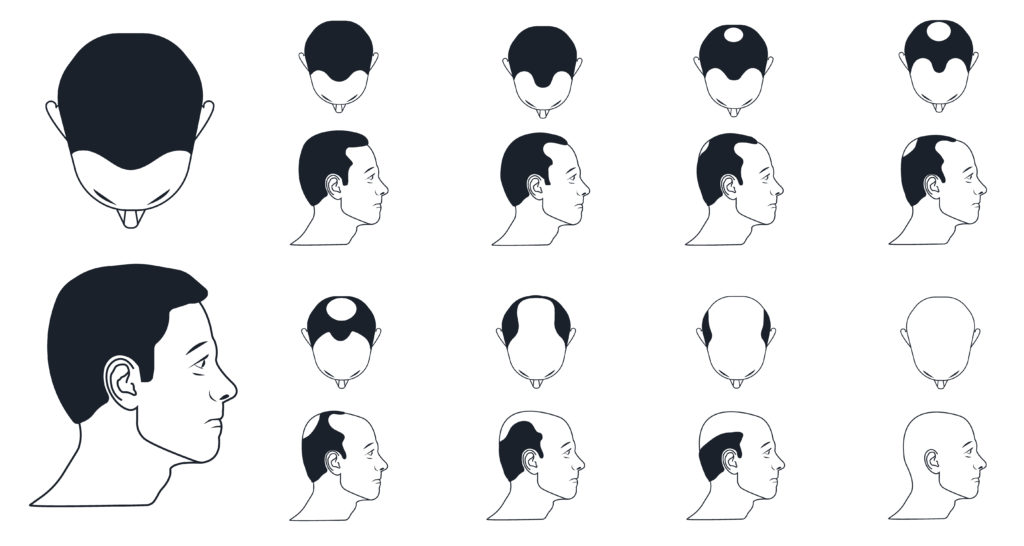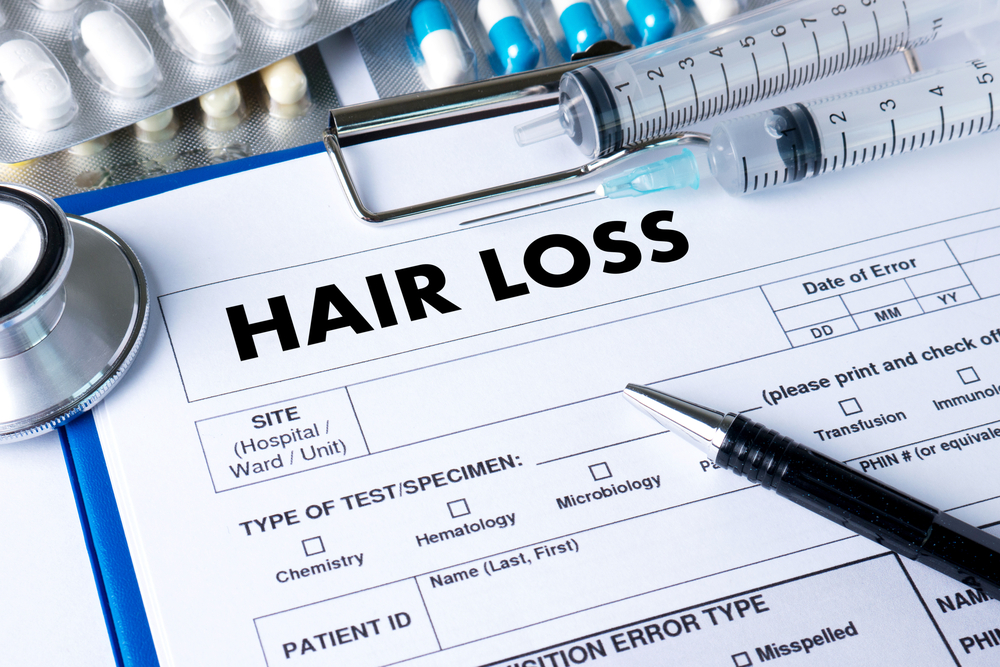
MALE HAIR LOSS
An overwhelming 50 million men in the U.S. suffer from hair thinning, and a majority are affected before the age of 50 years old. Hair loss expert, PA Sophia Michelle is dedicated to improving these astronomical numbers through education, and a multi-therapy approach to a complex condition. She knows far too well the struggles of hair thinning, and the long-term psychological impact the condition can have on an individual. Her combination of clinical expertise, and mastery expertise in the science of making a medical decision; PA Sophia Michelle has identified the most effective, and safest treatments for hair loss. These customized plans and techniques have continued to save her follicles, and dramatically improve PA Sophia Michelle’s overall health.
The following resources are for not only the clients of Sophia Michelle Aesthetics | Wellness, but anyone struggling to find answers on hair loss causes, and treatments. Learn how to improve your chances optimal hair health. One of the most important aspects of hair health is seeking treatment as soon as you notice changes in your hair. Noticeable changes mean that causes of the changes have most commonly been occurring for some time. The power of knowledge is the key to health success for any individual seeking treatment. Schedule your free consultation today.
PSYCHOLOGICAL EFFECTS
Whether you are a young man suffering from the early onset of hair loss to a mature man seeing dramatic changes in your hair thickness; these situations create stressful changes. For the first-time medicine, treatments that make a significant impact on the restoration of hair are available. PA Sophia Michelle understands the emotions alongside her patients, and her staff is dedicated to helping each client reach their hair health goals.

PATTERN
Just about everyone knows the most common condition of baldness for men, androgenic alopecia and can affect 80% of men by the age of 80. The causes are usually straightforward for men:
- Genetics
- Imbalance of DHT (dihydrotestosterone)
DHT attacks hair follicles causing a reduction in their ability to maintain a healthy hair growth cycle. Most commonly male pattern baldness begins in the late 20’s and early 30’s. The front of the hairline is usually the first area affected. Some individuals will only suffer from a loss in this area, while others will expand to the crown and eventual joining of these two areas. Follicles will decrease in width, and grow at significantly slower rates, leading to early onset of fall out, and eventual follicular death. The follicles that are subject to the effects of DHT are centered on the front and top portions of the scalp with sparing of the sides and lower back.
PROBABILITY
Male pattern baldness commonly begins in the 20’s and 30’s. Onset is usually slow and cyclic, then advancing to rapid loss with periods of stability in between. Most commonly the temple regions will be the first location to notice loss and the development of an M shape loss pattern will occur. A few men will not continue with an additional loss, while others will advance to a U-shaped or horseshoe pattern where the crown suffers loss as well, and these two sections join.

NORWOOD CLASSIFICATION SCALE
The Norwood Classification Scale helps medical providers stage hair loss, and predict future pattern changes. Majority of men can look at the scale, and identify the changes that have occurred to them over time. 95% of male pattern loss is Norwood.
- Stage 1 Young adult hairline with very minor or no recession of the hairline.
- Stage 2 Adult or mature hairline, mild recession of the frontal hairline, slightly at the frontotemporal areas.
- Stage 2A Deepest recession of the frontotemporal hairline.
- Stage 3A Deepest recession of the frontotemporal hairline with more extensive thinning in the front.
- Stage 3 Early stage of hair loss. Deepening frontotemporal recession producing a ‘M’ shaped pattern. These areas are completely bald or only sparsely covered by hair.
- Stage 3 Vertex early hair loss primarily in the crown (vertex).
- Stage 4 Frontal hair loss and enlargement of vertex, unbroken band of hair across the top (mid-scalp) separating the front and crown remains.
- Stage 4A Advanced thinning on the upper and frontal part of the scalp.
- Stage 5 Horseshoe Pattern, hair loss in the front and crown, and the bridge of hair separating the two areas begin to join.
- Stage 5A Only with extended thinning on the upper and frontal part of the scalp.
- Stage 6 Connecting bridge of hair loss with only sparse hair remaining. The hair loss on the sides of the scalp progressed.
- Stage 7 Narrow band of hair remains on the back and sides of the scalp.

DIAGNOSIS
Men pattern baldness is usually diagnosed by a physical exam and history of loss. Sophia Michelle Aesthetics will conduct a complete evaluation of every client’s medical history, and pattern of hair loss before providing a diagnosis, and treatment plan. Genetic predisposition usually causes an overwhelming majority of male hair loss (95%); however, a small subset of men will suffer from skin conditions, nutritional depletion, and other medical conditions that contribute to thinning. Commonly, our clients with these conditions have more than just complaints of hair thinning, and burning/tenderness sensation of the scalp. Often we can find redness, irritation, dry scalp, an unusual pattern of loss, and more to help identify other causes. Only for patients suspected with scarring alopecia would a biopsy be recommended. A thorough evaluation will be done with a digital microscope, and superior software to help provide you with an accurate evaluation of the current health of your hair. The thickness, length, and ability for each follicle to produce a specific number of hair shafts will be analyzed. Further, determine your average rates of hair growth and hair shedding. Schedule a consultation today for your in-depth analysis.
TREATMENT
Our mission is to help educate our clients and the community on the multiple options available to those suffering from hair thinning. Commonly, by the time someone has sought treatment for hair loss 50% of their follicles are no longer producing shafts. Sophia Michelle Aesthetics provides education on the types of therapies that genuinely work. Every individual will have a different optimal treatment plan, and many clients can all benefit from each of these nonsurgical therapies.
NONSURGICAL TREATMENTS
SURGICAL TREATMENT
For a small portion of patients may not reach their restoration hair goals with nonsurgical therapies, and those patients will be referred for an evaluation for possible hair transplantation surgery.
PATTERNS OF LOSS
The American Academy of Dermatology has accepted the following scales, and are often used when discussing female loss:

Norwood Scale (Male Pattern Loss/Uncommon):
Frontal and crown hair loss with a bitemporal recession. Commonly will begin with thinning or recession within the temples and the crown region of the scalp.

Olsen Scale:
Thinning of hair that is worse in the front and decreases towards the back of the scalp. Often, referred to as the “Christmas Tree,” or a triangular-shaped pattern of loss.
